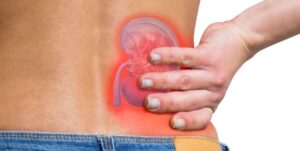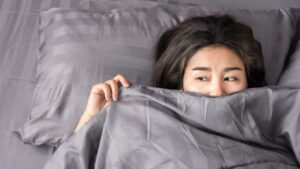In recent years, alternative forms of medicine have gained popularity as people seek out holistic approaches to healing and pain management. Two such practices that are often mentioned in the same breath are dry needling and acupuncture. While both involve the use of fine needles inserted into the skin, there are key differences that set them apart. In this article, we will delve into the intricacies of dry needling and acupuncture, explore their origins and techniques, discuss their common uses and benefits, highlight their differences, and provide insights into how to choose between the two.

Understanding the Basics of Dry Needling
Dry needling is a relatively modern practice that originated in the 1940s. Developed by Janet G. Travell, MD, it was initially used to alleviate muscle pain and trigger points. Unlike acupuncture, which is based on Traditional Chinese Medicine (TCM), dry needling is rooted in Western medicine principles. The technique involves the insertion of thin needles into specific areas known as trigger points, which are tender, tight bands of muscle fibers. By inserting the needles, skilled practitioners aim to stimulate the trigger points and release tension, promoting pain relief and improved muscle function.
The Origins of Dry Needling
To fully understand dry needling, it’s important to know its historical background. As mentioned, it was created by Janet G. Travell, a medical doctor who specialized in physical medicine and rehabilitation. Dr. Travell developed the technique as an adjunctive therapy for managing myofascial pain syndrome and trigger points, which are areas of muscle that are excessively painful when compressed or stimulated. Her approach was grounded in Western anatomical and neurophysiological concepts, making it distinct from acupuncture.
The Process and Techniques of Dry Needling
The process of dry needling involves the insertion of a fine filament needle through the skin and into the trigger point. The needle is typically made of stainless steel and is much thinner than those used for injections. Practitioners manipulate the needle to stimulate the trigger point, eliciting a twitch response or a local muscular response. This twitch response helps in releasing tension and promoting the relaxation of the targeted muscle fibers. Dry needling can be performed using either only one needle or multiple needles, depending on the specific needs of the patient.
Common Uses and Benefits of Dry Needling
Dry needling is primarily used for relieving muscular pain and addressing trigger points. It has shown effectiveness in reducing pain associated with conditions such as back pain, neck pain, shoulder pain, and headaches. Moreover, dry needling has been found to enhance muscle function, improve range of motion, and promote overall physical performance.
Delving into the World of Acupuncture
Unlike dry needling, which has a relatively recent origin, acupuncture is an ancient practice that can be traced back over 2,500 years. It is an integral part of Traditional Chinese Medicine and is based on the concept of balancing the body’s energy, or Qi, to promote health and wellbeing. Acupuncture involves the insertion of thin needles into specific points along the body’s meridians, which are believed to be pathways that carry Qi throughout the body.
The Ancient Roots of Acupuncture
The roots of acupuncture can be found in ancient China, where it was developed as a holistic healing system that aimed to restore harmony in the body. It is based on the belief that imbalances or blockages in the flow of Qi can lead to illness or pain. By inserting needles into specific points, an acupuncturist seeks to restore the balance of Qi, allowing the body to heal itself naturally.
The Procedure and Methods of Acupuncture
During an acupuncture session, a practitioner inserts thin needles into various points on the body. The selection of points depends on the individual’s symptoms and the specific condition being treated. Acupuncturists take into account the patient’s overall health, medical history, and current complaints to create a tailored treatment plan. The needles are typically left in place for a period of time, ranging from a few minutes to up to 30 minutes, during which the patient is encouraged to relax. This enables the body to respond and adjust to the acupuncture stimulation, promoting the flow of Qi.
The Wide Range of Acupuncture Applications
Acupuncture is renowned for its versatility in treating a wide range of conditions. It has been used to address various physical and mental health issues, including but not limited to chronic pain, fertility issues, migraines, stress, anxiety, and digestive disorders. Research suggests that acupuncture can help stimulate the release of endorphins, reduce inflammation, improve circulation, and modulate the immune system, contributing to its effectiveness in promoting overall wellbeing.

Key Differences Between Dry Needling and Acupuncture
Differences in Historical Background and Philosophy
Perhaps the most fundamental difference between dry needling and acupuncture lies in their historical backgrounds and underlying philosophies. Dry needling has a Western medical origin and is based on anatomical and neurophysiological principles. It primarily targets trigger points to alleviate muscle pain and improve function. In contrast, acupuncture has ancient roots in Chinese medicine and is grounded in the concept of balancing Qi to achieve overall health and vitality.
Variations in Techniques and Procedures
While both dry needling and acupuncture involve the insertion of needles into the skin, their techniques and procedures differ. Dry needling focuses on targeting specific trigger points and eliciting a local twitch response for muscle relaxation. Acupuncture, on the other hand, involves the insertion of needles into points along the body’s meridians to restore the balance in the flow of Qi. Acupuncture treatments are often more comprehensive, addressing multiple points on the body.
Comparing the Scope of Treatment
When it comes to the scope of treatment, acupuncture generally offers a broader range of applications compared to dry needling. While dry needling primarily focuses on musculoskeletal issues and trigger point release, acupuncture can be used to address a multitude of conditions, including pain management, stress reduction, hormonal imbalances, digestive disorders, and more. The holistic approach of acupuncture considers the individual as a whole, taking into account physical, mental, and emotional aspects.
Choosing Between Dry Needling and Acupuncture
Factors to Consider When Choosing a Treatment
When deciding between dry needling and acupuncture, several factors should be considered. First and foremost, it is important to understand your specific needs and goals for seeking treatment. If you are primarily dealing with musculoskeletal issues and trigger point-related pain, dry needling may be a suitable option. Conversely, if you are looking for a holistic approach that considers your overall wellbeing, acupuncture may be more aligned with your goals. It is crucial to consult with qualified practitioners of both modalities to discuss your condition and desired outcomes.
Potential Risks and Side Effects
Both dry needling and acupuncture are generally safe when performed by skilled and qualified practitioners. However, it is essential to be aware of potential risks and side effects. With dry needling, there is a small risk of minor bleeding, bruising, or infection at the needle insertion site. Acupuncture, being more comprehensive, may carry a slightly higher risk of the aforementioned side effects, including rare cases of pneumothorax. It’s vital to choose experienced practitioners who adhere to strict hygiene and safety practices.
The Role of Personal Preference and Comfort
Lastly, personal preference and comfort play a significant role in choosing between dry needling and acupuncture. Some individuals may feel more comfortable with the tangible and anatomically focused approach of dry needling, while others may resonate with the holistic philosophy of acupuncture. It is essential to listen to your own intuition and find a treatment that aligns with your beliefs and values.
Overall, both dry needling and acupuncture are effective therapies with their own unique characteristics. Whether you opt for dry needling or acupuncture, it’s important to work with qualified practitioners, communicate your needs, and make informed decisions that prioritize your health and wellbeing. By understanding the differences between these two modalities, you can choose the most suitable treatment approach for your specific situation.











